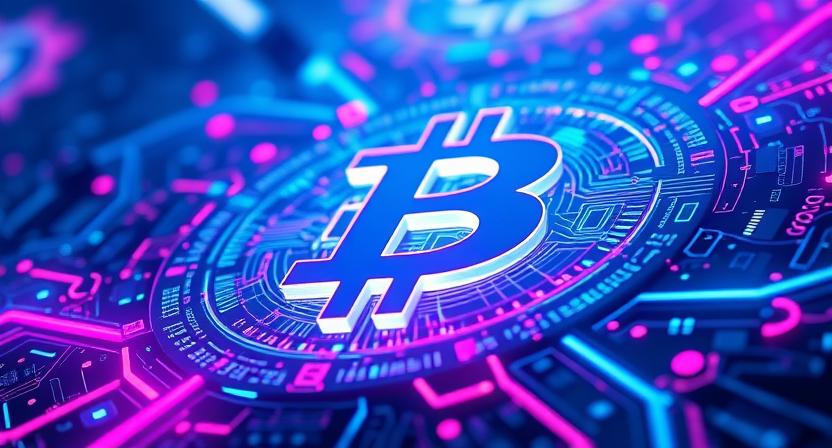The metaverse is no longer a distant sci-fi concept—it’s rapidly becoming a reality. As virtual worlds expand and digital interactions grow more immersive, one technology stands out as the backbone of this transformation: blockchain. Blockchain isn’t just about cryptocurrencies like Bitcoin or Ethereum; it’s a revolutionary framework that enables trust, ownership, and transparency in digital spaces. In this blog post, we’ll explore why blockchain is so critical to the metaverse and how it’s shaping the future of our digital lives.
What is the Metaverse?
The metaverse is a collective virtual shared space, created by the convergence of virtually enhanced physical reality, augmented reality (AR), and the internet. It’s a place where people can interact, work, play, and even own assets in a fully immersive environment. Think of it as the next evolution of the internet—a 3D, interactive, and persistent digital universe.
But for the metaverse to function as a truly open and equitable space, it needs a way to establish trust, verify ownership, and enable seamless transactions. This is where blockchain comes in.
What is Blockchain?
Blockchain is a decentralised, distributed ledger technology that records transactions across a network of computers. Each transaction is grouped into a “block” and linked to the previous one, forming a “chain.” This structure ensures that data is secure, transparent, and immutable—meaning it cannot be altered or tampered with once recorded.
Blockchain’s key features include:
- Decentralization: No single entity controls the network.
- Transparency: All transactions are visible to participants.
- Security: Cryptographic techniques protect data integrity.
- Ownership: Digital assets can be uniquely owned and transferred.
Why Blockchain is Essential to the Metaverse
The metaverse is built on the idea of a decentralised, user-owned digital ecosystem. Blockchain provides the infrastructure to make this vision a reality. Here’s how:
1. True Digital Ownership
In the metaverse, users can buy, sell, and trade digital assets like virtual real estate, avatars, clothing, and even art. Blockchain enables true ownership of these assets through non-fungible tokens (NFTs). NFTs are unique digital tokens that represent ownership of a specific item or piece of content. Unlike traditional digital files, which can be copied infinitely, NFTs are one-of-a-kind and verifiable on the blockchain.
For example, if you buy a virtual plot of land in the metaverse, the blockchain ensures that you—and only you—own it. This ownership is recorded publicly and cannot be disputed.
2. Interoperability
The metaverse isn’t a single platform; it’s a network of interconnected virtual worlds. Blockchain enables interoperability, allowing users to move assets and identities seamlessly between different metaverse environments. For instance, a sword you earn in one game could be used in another, or your avatar could travel across multiple virtual spaces without losing its unique characteristics.
3. Decentralised Economies
Blockchain powers decentralised finance (DeFi) systems, which are crucial for the metaverse’s economy. Users can earn, spend, and invest digital currencies within virtual worlds. These transactions are secure, transparent, and free from the control of traditional financial institutions. This creates a more inclusive and accessible economic system for users worldwide.
4. Trust and Transparency
In a fully digital environment, trust is paramount. Blockchain’s transparent and immutable nature ensures that all transactions and interactions are verifiable. This reduces fraud, ensures fair play, and builds trust among users and developers.
5. User Empowerment
The metaverse is meant to be a user-driven space, not one controlled by a handful of corporations. Blockchain decentralizes power, giving users control over their data, assets, and experiences. This aligns with the core ethos of the metaverse: a democratized digital world where everyone has a voice.
Real-World Examples of Blockchain in the Metaverse
Several projects are already leveraging blockchain to build the metaverse:
- Decentraland: A virtual world where users can buy, sell, and build on virtual land using MANA, its native cryptocurrency.
- The Sandbox: A gaming platform where players create, own, and monetize their gaming experiences using blockchain-based assets.
- Axie Infinity: A play-to-earn game where players collect, breed, and battle fantasy creatures called Axies, earning cryptocurrency in the process.
These platforms demonstrate how blockchain can create vibrant, user-owned economies within the metaverse.

Challenges and the Road Ahead
While blockchain is a game-changer for the metaverse, it’s not without challenges. Scalability, energy consumption, and regulatory concerns are ongoing issues that need to be addressed. However, advancements like layer-2 solutions, proof-of-stake consensus mechanisms, and cross-chain interoperability are paving the way for a more efficient and sustainable blockchain ecosystem.
Conclusion
Blockchain is more than just a technology—it’s the foundation of the metaverse. By enabling true ownership, interoperability, decentralised economies, and trust, blockchain ensures that the metaverse remains open, equitable, and user-centric. As we continue to explore and build this digital frontier, blockchain will play an indispensable role in shaping a future where the lines between the physical and virtual worlds blur.
The metaverse is coming, and blockchain is the key to unlocking its full potential. Are you ready to be part of this revolution?
What are your thoughts on blockchain and the metaverse? Share your opinions in the comments below!


Leave a Reply